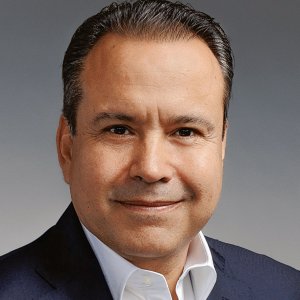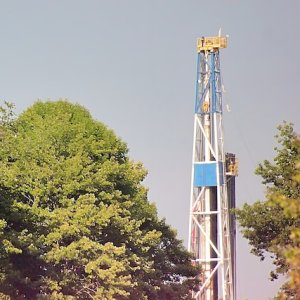Information for All Players in the Energy Sector

STORY INLINE POST
Access to resources is important for the development of any industry but that development will lag if the main actors are unacquainted with the resources available to them. In Mexico, SENER and the Science and Technology Council (CONACYT) have financing schemes to foster the creation of new technologies and projects that can push renewable energy and clean technologies forward. These are supported by dissemination strategies to let the private sector know that they can count on the government’s support.
SENER’s Information and Energy Studies Department (DGIEE) takes care of planning and managing research and development funds. The most important financial mechanisms managed by this department are the Energy Sustainability Fund and the Hydrocarbons Fund. Although these funds were created in 2008, Carlos Ortíz Gómez, Director General of Information and Energy Studies at SENER, says they have remained underused until now, and that big efforts are taking place to turn this around. These funds were designed as important instruments to help the energy sector to break technology chains and thus achieve its potential. Both funds have economic resources dedicated for investment in R&D to increase the domestic power related technology supply. An important challenge towards fostering increased participation from eligible candidates to financing is a lack of knowledge about the funds, while other actors do not know how to use them effectively. Ideally, federal government mechanisms designed to help finance the development of technologies should not face a situation in which only a small number of privileged parties have access to the right information. “There should be a clear and concise message: anyone interested in developing technologies for the energy sector requires pertinent information in order to have access to these funds,” says Ortíz Gómez. Even if the energy sector can benefit from SENER’s funds, these cannot alter the market alone. “Like any investment portfolio, we look for diverse projects,” explains Ortíz Gómez. The Energy Sustainability Fund has total assets of approximately MX$7 billion (US$538 million), which is substantial but not enough to compete with leading markets. As with any other investment portfolio, SENER has short, medium and long-term investments. Short-term investments are used to identify and invest in projects that increase locally generated technology. For longer-term objectives, DGIEE is investing on developing a critical amount of skilled professionals to create the human capital infrastructure required that will eventually provide tangible results.
The funds are still at an early stage and Ortíz Gómez hopes their contribution to science and development will be seen in the medium to long-term. One challenge for DGIEE is demonstrating that science and technology are not to be gauged through the same metrics as investments. At this stage, initiatives and projects are ongoing and tangible results for the energy sector will require time, perseverance and patience. DGIEE has precise figures as to the amount of people who have been trained through the funds, the number of patent request forms it has received and all publications. Despite not developing at a fast pace, the funds are gradually increasing the human capital and institutional capacity of the energy sector. Their greatest strength lies in their ability to improve the position of the players involved in the power industry. Ortíz Gómez claims the objectives stated in the National Development Plan and the National Energy Strategy could be achieved with or without these funds. However, the investments do make a difference in how these goals are approached. For example, Mexico has been importing technology for a long time. “The country not only buys foreign equipment, but is also dependent on foreign services throughout the life cycle of the technology as there are few local suppliers able to provide the required products and services. But when these funds are added to the mix along with strategic instruments, domestic participation and local contents can be created, bringing about more favorable conditions. These funds make the sector stronger and give it a more national focus,” explains Ortíz Gómez.
The law states that funds should be destined to research and educational institutions, excluding private companies. That limits their profit scope and potential. “If we could take advantage of the knowledge and experience of large, well-established companies, we could develop interesting projects that would challenge Mexican engineers, increasing their abilities. This would accelerate the assimilation process and the development of technology,” says Ortíz Gómez, adding that the Mexican private sector has not enjoyed such incentives in the past since the funds were very recently established and their legal framework is catered exclusively to universities and research centers. However, DGIEE is working on initiatives to promote the industry’s participation in this process. Ortíz Gómez states that it is important to make additional efforts in making the industrial sector see research centers as solution providers. “We want the industry to approach research centers to help develop technological solutions that can be financed through SENER’s funds. If companies can work hand in hand with universities or research centers, technological advancements would speed up in Mexico.”
DGIEE analyzes the gaps in the life cycle of technological development to determine where the funds could be destined. Prior to this, there were no mechanisms to close the chain, according to Ortíz Gómez. But today a technological proposal may be supported by the federal government from the basic or applied research stage, and all the way towards the production stage. If a profitable business results from such external funding, companies could secure better revenues. Technology companies could then be allowed develop in a reduced-risk environment through SENER’s funds. Ortíz Gómez sees Mexico as a rich country in terms of funding resources devoted to research and development. It is just a matter of tapping into the right resource and exploiting it. Information should not be an obstacle to such development, which is one of the cornerstones of SENER’s mission.
HYDROCARBON FUND
The Hydrocarbon Fund intends to grow the number of projects focused on technological development to close technology gaps and develop the Mexican technology base to support the extraction of more complex hydrocarbons. Companies and institutions can submit their project proposals related to technology and innovation, which are reviewed by a committee formed by SENER, CONACYT, and PEMEX. Approved projects are then provided with the necessary funding to be developed. The Hydrocarbon Fund’s budget comes from 0.65% of the annual value of extracted crude oil and natural gas given to scientific research and development, of which 63% is allocated to this fund. Its total accumulated budget had reached US$697.67 million at the end of 2012, which will go to help technological development across universities, public and private educational institutions as well as research centers and laboratories in both the public and private sectors.
In its almost seven years of existence, the fund has focused its scope providing financial resources to the creation of production enhancing technologies and catalysts for refining processes. The fund is aligned with PEMEX’s Strategic Technology Plan, and deepwater resources as well as shale oil and gas are critical issues that PEMEX will be addressing, with shale gas and oil exploration being seen as the fund’s priority. During 2013, US$244 million of the Hydrocarbon Fund’s budget was allocated to the search for shale gas with the goal of acknowledging Mexico’s prospective resources and laying the foundation for their sustainable exploitation.
SUSTAINABLE ENERGY FUND
The Sustainable Energy Fund is an instrument created to foster scientific research and development, as well as the adoption, innovation, and assimilation and technological development in areas including energy efficiency, renewable energy, clean technologies and diversification of primary energy sources. In 2008, it was decided that 0.65% of the annual value of extracted crude oil and natural gas would go to support scientific research and development concerning the energy sector. Since 2010, 20% of this budget has been allocated to the Sustainable Energy Fund.
Since it was created and until 2012, the fund has published six calls for projects. The first went out in 2009, the second in 2010, and four more during 2012. These have supported 49 projects with a total of MX$380 million (US$29 million) in grants. 67% of the supported projects are dedicated to renewable energy, 14% to clean technology, 11% to the diversification of primary energy sources, and 8% to energy efficiency. UNAM has been one of the main recipients, which also include the Energy Research Center, the Electricity Research Institute (IIE), and the Mexican Petroleum Institute, as well as other private institutions. One of the most interesting projects was the creation of the Mexican Energy Innovation Center during 2012, which has the goal of establishing innovation alliances for renewable energy research. Nevertheless, the Sustainable Energy Fund has been named within the National Energy Strategy as a fundamental player to help Mexico reach the target of generating 35% of its energy from renewable sources by 2024






















